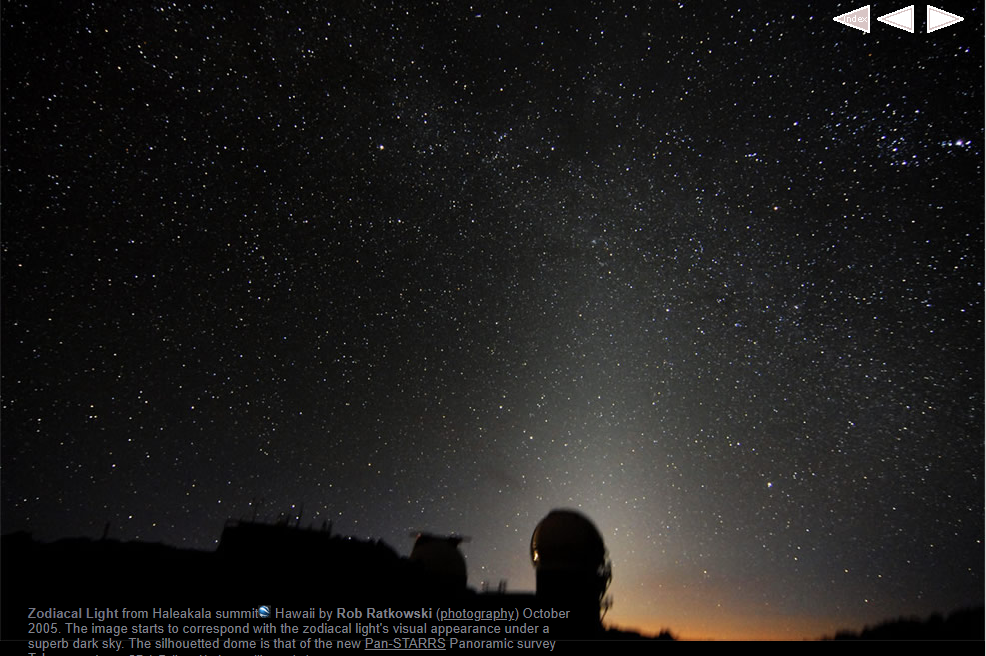Zodiacal Light from Haleakala Summit, Hawaii
Zodiacal Light from Haleakala Summit, Hawaii: A Spectacular Celestial Phenomenon
Zodiacal light is a fascinating celestial phenomenon that can be observed from various locations around the world. One particularly breathtaking vantage point is the Haleakala summit in Hawaii. This article delves into the mesmerizing spectacle of Zodiacal Light from the Haleakala summit, exploring its visual appearance, the factors that contribute to its formation, and the best times to witness this natural wonder.
What is Zodiacal Light?
Zodiacal light is a faint glow that extends along the ecliptic, which is the apparent path of the Sun across the sky throughout the year. This ethereal illumination results from sunlight scattering off interplanetary dust particles that reside in the plane of the solar system. The name "zodiacal" is derived from the fact that the light appears in the same region as the zodiacal constellations.
The Visual Appearance
Under a superb dark sky, such as the one experienced from the Haleakala summit, the zodiacal light manifests as a faint pyramid of light that extends upwards from the horizon. It can be seen after sunset or before sunrise as a hazy glow that stretches along the ecliptic. The zodiacal light is often mistaken for the glow of the Milky Way, but it has a distinct pyramid shape that sets it apart.
Factors Contributing to Zodiacal Light Formation
Several factors contribute to the formation of zodiacal light. The primary factor is sunlight scattering off microscopic dust particles in the plane of the solar system. These dust particles are remnants of comets, asteroids, and other celestial bodies. Additionally, the angle between the Sun and the observer's location plays a role in determining the visibility and intensity of the zodiacal light.
Optimal Viewing Conditions
To experience the awe-inspiring beauty of Zodiacal Light from the Haleakala summit, it is crucial to choose the right time and conditions. Here are some key considerations:
-
Dark Sky: The Haleakala summit in Hawaii offers an excellent vantage point due to its remote location and minimal light pollution. This ensures a pristine dark sky, allowing for optimal viewing of the zodiacal light.
-
Time of Year: Zodiacal light is most prominent during certain times of the year. In the northern hemisphere, the best viewing months are February, March, and April after sunset, and September, October, and November before sunrise. However, the specific timing can vary slightly depending on your location.
-
Time of Day: For optimal viewing, it is advisable to plan your observation session around astronomical twilight, which is the period when the Sun is between 12 and 18 degrees below the horizon. During this time, the sky is dark enough to reveal the subtle glow of the zodiacal light.
Photographing Zodiacal Light
Capturing the beauty of zodiacal light through photography can be a rewarding experience. To photograph this phenomenon from the Haleakala summit or any other location, here are some tips to keep in mind:
-
Use a Tripod: Since zodiacal light is relatively faint, it is essential to stabilize your camera using a tripod to avoid blurry images.
-
Long Exposure: Set your camera to a long exposure time, typically between 15 and 30 seconds, to capture the faint details of the zodiacal light.
-
Low ISO Setting: To minimize noise and maximize image quality, use a low ISO setting (e.g., ISO 100 or 200).
-
Wide-Angle Lens: A wide-angle lens will allow you to capture a larger portion of the sky, showcasing the zodiacal light in its full glory.
Conclusion
The Zodiacal Light from Haleakala summit in Hawaii presents a captivating celestial display that enchants both seasoned stargazers and photography enthusiasts alike. Its ethereal glow, visible under a superb dark sky, creates a surreal pyramid of light along the ecliptic. By understanding the factors that contribute to its formation and choosing the optimal viewing conditions, you can witness this natural wonder in all its splendor. So, plan your visit to the Haleakala summit during the ideal time of year and be prepared to be mesmerized by the enchanting Zodiacal Light.

Zodiacal Light from Haleakala summit Hawaii by Rob Ratkowski (photography) October 2005. The image starts to correspond with the zodiacal light's visual appearance under a superb dark sky. The silhouetted dome is that of the new Pan-STARRS Panoramic survey Telescope. Image ©Rob Ratkowski, shown with permission.
Note: this article has been automatically converted from the old site and may not appear as intended. You can find the original article here.
Reference Atmospheric Optics
If you use any of the definitions, information, or data presented on Atmospheric Optics, please copy the link or reference below to properly credit us as the reference source. Thank you!
-
<a href="https://atoptics.co.uk/blog/zodiacal-light-from-haleakala-summit-hawaii/">Zodiacal Light from Haleakala Summit, Hawaii</a>
-
"Zodiacal Light from Haleakala Summit, Hawaii". Atmospheric Optics. Accessed on April 19, 2024. https://atoptics.co.uk/blog/zodiacal-light-from-haleakala-summit-hawaii/.
-
"Zodiacal Light from Haleakala Summit, Hawaii". Atmospheric Optics, https://atoptics.co.uk/blog/zodiacal-light-from-haleakala-summit-hawaii/. Accessed 19 April, 2024
-
Zodiacal Light from Haleakala Summit, Hawaii. Atmospheric Optics. Retrieved from https://atoptics.co.uk/blog/zodiacal-light-from-haleakala-summit-hawaii/.